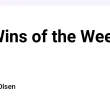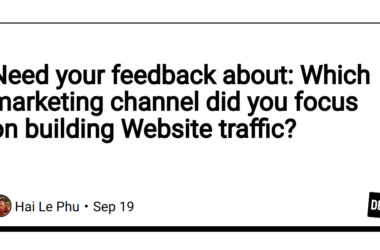Decentralized applications (DApps) are software apps that run on a bunch of computers all connected through distributed ledger (web3). When you build this software, it’s not just about the tech but also about making decisions that affect how well it works.
This article dives into the key things you need to know about developing distributed systems, from figuring out what makes them tick to picking the best tools and platforms to build them on.
What Is DApp?
Decentralized applications are software that doesn’t rely on a single central server but instead runs on many computers and allows people to make direct transactions and interact with each other.
Importance and Benefits of DApps
DApps offer many benefits, which we will explore further. One of the biggest advantages is openness. Every transaction is recorded on a public network that anyone can see. This means all actions are honest and verifiable because nothing can be hidden or altered.
Security is another major benefit. Blockchains are very secure because they are distributed, making it hard for hackers to attack or change the data.
Distributed programs also remove the need for intermediaries, or middlemen, who traditionally handle transactions and data. By allowing direct interactions between users, DApps reduce the risk of single points of failure and lower transaction costs.
Lastly, distributed systems are also highly interoperable and composable. Many platforms allow different systems to work together, and developers can create complex solutions by combining multiple tools.
Understanding the Components of DApps
Let’s break down the main parts of distributed programs to make it easier to understand how they work.
Smart Contracts
Smart contracts are automated agreements that run on the blockchain. They are written in code and automatically follow the terms without needing a middleman.
For example, a smart contract can automatically transfer ownership of a digital item when payment is made.
Backend
The backend of a DApp is supported by a network of many independent computers called nodes. Unlike traditional systems that use central servers, distributed counterparts use these nodes to store data and handle transactions.
Each node has a copy of previous blocks, which makes the data secure and unchangeable. This setup avoids single points of failure and boosts the product’s safety.
Frontend (User Interface)
The frontend is what users see and interact with, just like the interface of any web or mobile program. It connects to the blockchain using specific tools and allows the app to communicate with smart contracts.
Wallets
Digital wallets store the user’s cryptocurrencies and digital assets and keep private keys, which are needed to sign transactions.
Examples of these wallets are MetaMask for Ethereum and Phantom for Solana. Wallets integrate with the frontend, making it easy for users to transact and interact with the ledger.
Key Things to Keep in Mind When Building Custom DApps
When you’re about to dive into custom DApp Development, picking the right platform is super important. You want to look at things, such as scalability, security, and the tools available for developers.
Ethereum, Binance Smart Chain, and Solana are popular choices, each with its own perks. Using frameworks like Truffle and Hardhat, along with smart contract languages like Solidity, can simplify your efforts a lot during decentralized application development.
It’s also key to make sure your software has a user-friendly interface and solid security. Do thorough testing and audits to catch any issues early. Don’t forget about legal stuff—check if you comply with relevant regulations.
Lastly, get involved with the developer community. They can provide valuable support and feedback to help you succeed.
Steps to Build Your Decentralized Project
Creating software can be a tiresome and intimidating process. Here’s a simple guide to help you get started:
Define Your Idea
Start by figuring out what your program will do. What problem will it solve? What features will it have? Who will use it? Having a clear idea of your project’s goals will set you on the right path.
Pick Blockchain
Choose the suitable platform for your solution. Consider how fast it is, how much transactions cost, and what developer tools are available.
Write Smart Contracts
Create smart contracts that will handle your main activities. Solidity is great for Ethereum, while Rust is often used for Solana. Make sure to test your smart contracts to confirm they work correctly.
Set Up the Backend
Your software’s backend is powered by a network of decentralized nodes. Use tools like Truffle, Embark, or Hardhat to help you set up and manage this backend.
Build the Frontend
Move on to developing UX/UI design. This is the part users will see and interact with, so make it intuitive and easy to use. Connect your frontend to the distributed ledger using libraries, such as Web3.js or ethers.js.
Add a Wallet
Integrate a digital wallet so users can manage their cryptocurrencies and interact with your program. MetaMask for Ethereum and Phantom for Solana are great options. These wallets help users sign transactions and manage their assets.
Test Everything
Test your projects to catch any bugs. Ensure both your smart contracts and the overall functionality work as intended. Consider getting a security audit to confirm everything is safe from potential attacks.
Deploy
Once you’re confident everything is working well, deploy your solution on the chosen blockchain.
Monitor and Improve
Keep an eye on your solution after it’s live. Look out for any problems and gather feedback from users to improve.
Case Studies and Examples
Now, let’s check out some real-world examples of successful projects and see what makes them so awesome.
Uniswap
Uniswap is a decentralized exchange on Ethereum that lets you swap various ERC-20 tokens directly from your wallet.
It uses an Automated Market Maker (AMM) system that relies on smart contracts for token trading based on liquidity pools.
Plus, anyone can list a token without needing permission, and you stay in control of your funds during transactions.
CryptoKitties
CryptoKitties is a fun game where you can buy, collect, breed, and sell virtual cats, each one being unique and stored as a non-fungible token on Ethereum.
Each CryptoKitty has unique traits and can be traded or bred to create new kitties. The game uses the ERC-721 token standard for NFTs, making each digital kitty unique.
Compound
Compound is a DeFi platform where you can earn interest by supplying your crypto to the platform or borrow assets by providing collateral. Interest rates are set based on supply and demand, and borrowers must provide collateral to secure their loans.
Future Trends
The future of blockchain DApp development looks pretty exciting, with some incredible trends on the horizon.
First up, we’re seeing improvements in scalability with technologies, such as layer-2 solutions and sharding, which should make transactions faster and cheaper.
There’s also a push for web3 software to work across different networks, making it easier to move assets around. User experience is getting a boost, too, with simpler interfaces and quicker transactions in the works.
DeFi is set to grow even more, offering lending and automated asset management. Plus, governance is becoming more community-driven, giving users a bigger say in how systems are run.
Conclusion
When you’re making decentralized software, it’s all about mixing tech skills, planning ahead, and knowing how distributed ledgers work. By using the best tools, tech, and platforms, you can whip up notable products that boast openness, security, and high performance.
Want to dive into decentralized apps or need help with blockchain development? Hit up SCAND now and start building cool solutions that bring transparency and security to your projects!
The post How to Build Your DApps appeared first on SCAND.








